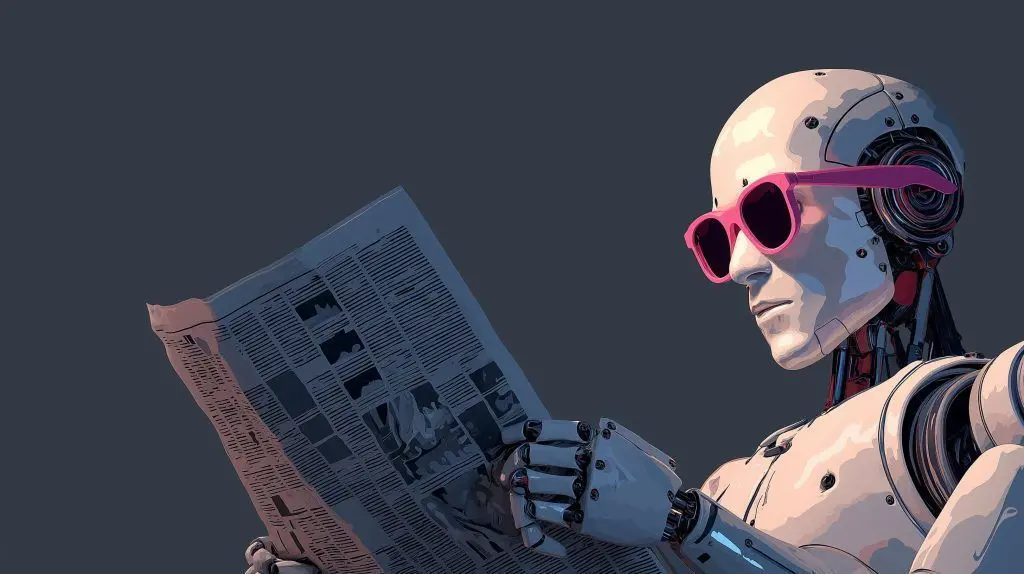The winners and losers of AI 2025 reveal clear divides: tech giants, chipmakers, and skilled professionals gain wealth, while routine workers, small businesses, and less-prepared countries fall behind. AI amplifies opportunities for those with capital and skills, but risks deepening inequality for others.
KumDi.com
The winners and losers of AI 2025 are already visible. Artificial intelligence is accelerating wealth for tech giants, investors, and high-skill workers, while routine employees, small businesses, and digitally underprepared regions face financial setbacks. This divide highlights how AI amplifies opportunity for some while threatening stability for others.
Artificial intelligence is no longer a laboratory novelty — it’s a commercial engine reshaping revenues, job markets, and national competitiveness. The economic effects are uneven: some firms, sectors and countries extract outsized value, while others confront shrinking wages, lost jobs, or diminished market share. This article maps who is likely to get richer and who is likely to get poorer during the 2025 period and beyond, explains the mechanisms driving that divergence, and provides actionable strategies for businesses, workers and policymakers to respond.
Table of Contents
What “richer” and “poorer” mean in the AI context
Before we dive in, clear definitions help.
- Richer: sustained increases in income, market capitalization, profit margins, or national GDP share directly attributable to AI adoption, ownership of AI-enabled assets (models, data, compute), or successful monetization of AI-enabled services.
- Poorer: falling wages, job displacement, loss of market share, or stagnant economic opportunity resulting from AI-driven automation, competitive disruption, or unequal access to AI infrastructure and skills.
Winners — who’s getting richer from AI (2025 → future)
1. Big cloud platforms and large AI platform owners
Cloud providers and platform companies that host models, provide APIs, and bundle AI services capture recurring revenue streams. They benefit from subscription models, enterprise contracts, and ecosystem lock-in. Because AI often requires persistent compute and storage, providers enjoy ongoing demand rather than one-time sales — a key reason they extract disproportionate value.
2. Semiconductor & hardware manufacturers
AI’s appetite for specialized processors and accelerators channels revenue to chipmakers and hardware suppliers. Firms that design GPUs, AI accelerators, and the server-grade components for data centers gain from multiyear procurement cycles and premium pricing on specialized silicon.
3. Enterprise software firms that embed AI into workflows
Software companies that successfully integrate AI to automate, personalize, or scale core business functions (CRM, marketing, supply chain, legal, finance) increase customer retention and margins. These firms convert AI as a feature into higher lifetime value per customer.
4. Highly skilled AI talent and complementary professionals
Engineers, ML researchers, data scientists, AI-savvy product managers and leaders who can build, tune, deploy and manage AI systems command premium wages. Similarly, professionals who offer judgment-heavy, creative, or interpersonal skills that AI augments (e.g., strategy consultants, specialized clinicians) also capture value.
5. Investors and venture-backed winners
Capital owners who invested early in AI startups, chip makers, or data-center infrastructure realize outsized returns when these firms scale. Private equity, venture capital, and public markets concentrate financial gains among shareholders.
6. Firms that own large, unique datasets
Organizations with proprietary, high-quality datasets that can train valuable models — in healthcare, finance, retail, or specialized industrial domains — can monetize those datasets through products, licensing, or superior model performance.
7. Countries with advanced AI ecosystems
Nations that host vibrant AI industries, strong research institutions, deep capital markets, and substantial cloud infrastructure attract investment, high-wage jobs, and exportable AI services. These countries see higher GDP contributions from AI-enabled sectors.
Losers — who’s getting poorer from AI (2025 → future)
1. Routine middle-skill and clerical workers
Roles that involve repetitive, predictable tasks (basic data entry, routine bookkeeping, low-level customer support, standard copy production) are highly automatable. Wages and job stability for these roles face downward pressure as AI substitutes for routine human labor.
2. Small businesses that can’t access or afford AI
Small and local firms without capital, digital literacy, or affordable access to cloud services struggle to automate, personalize, or scale. They lose competitive ground to larger, AI-enabled competitors who reduce costs and improve customer acquisition with AI tools.
3. Workers in low AI-readiness countries
Countries lacking reliable high-speed internet, cloud access, AI education pipelines, or policy support risk losing both jobs and investment. Manufacturing and service contracts may be automated or relocated to regions that can deploy AI at scale, widening international inequality.
4. Sectors with low ability to capture productivity gains
Some sectors see productivity improvements but lack mechanisms to translate those gains into higher wages for workers — for example, where capital owners capture gains via automation without shared profit mechanisms or bargaining power for labor.
5. Mid-sized incumbents slow to adopt AI
Firms that delay digital transformation or misinvest in low-impact AI experiments waste capital and cede market share to nimble competitors. This dynamic makes mid-market firms particularly vulnerable.
Why AI widens the gap
Scale and network effects
AI models improve with more data and users. Platforms that aggregate data benefit from positive feedback loops: more users → better models → more users. This creates winner-takes-most markets.
Capital intensity & fixed costs
Cutting-edge AI requires large upfront investment in compute, talent, and infrastructure. Those who can finance this investment capture ongoing returns, while others cannot enter the race easily.
Skill-biased technological change
AI complements high-skill cognitive work while substituting for routine manual or cognitive tasks. This bias inflates wages at the top and depresses them in the middle.
Rent-seeking around data and model ownership
Ownership of unique datasets, exclusive contracts, or regulatory advantages allows firms to extract rents rather than distribute productivity gains to workers or customers.
Policy and institutional lag
Where governance, labor policy, or public investment lag, market outcomes concentrate benefits rather than mitigating them through taxation, training programs, or competition policy.
Case patterns
- Platformization: A cloud provider offers an AI API. Large enterprises adopt it, reducing their labor budgets for routine tasks — the platform earns subscription fees while internal headcounts shrink.
- Data moat: A healthcare provider with millions of labeled records trains models that outperform generic models; they commercialize diagnostics, increasing profit margins. Smaller clinics cannot replicate the data scale.
- Service substitution: An AI assistant replaces junior legal-research roles, enabling law firms to deliver lower-cost services but reducing entry-level positions. Senior lawyers capture higher margins for complex strategy work.
What businesses should do

1. Adopt fast, but strategically
Prioritize AI projects that (a) clearly improve customer value, (b) scale margin improvements, and (c) have measurable ROI. Avoid chasing flashy but low-impact pilots.
2. Invest in data hygiene & productization
High-quality, well-governed data is the raw material of valuable AI. Treat data as a product: catalog, clean, secure, and instrument it for continuous improvement.
3. Retrain and redesign roles
Shift job designs so AI handles routine elements and humans focus on higher-value tasks. Invest in reskilling programs that combine technical skills (data literacy, prompt use) with judgment and interpersonal training.
4. Explore shared-capture models
Consider profit-sharing, internal retraining funds, or performance-linked incentives so productivity gains benefit workers and reduce backlash.
5. Make ethical and compliance guardrails part of product development
Robust governance reduces deployment risk and builds customer trust. Ethical AI frameworks are also a competitive advantage.
What policymakers should do
1. Scale reskilling and lifelong learning
Large, accessible programs focused on AI-adjacent skills (data literacy, system orchestration, domain expertise) are critical to preserving middle-class livelihoods.
2. Invest in digital infrastructure and cloud accessibility
Cloud credits, subsidized compute access, and investments in broadband expand the ability of small firms and developing economies to participate.
3. Encourage inclusive data and open models
Support data-sharing initiatives and public models that lower entry barriers while protecting privacy and competition.
4. Tax and redistribution reforms that target capital gains from automation
Design fiscal policies that capture some of the concentrated gains for public investment in workers and infrastructure, without stifling innovation incentives.
5. Strengthen labor-market transitions
Improve unemployment insurance, portable benefits, and job-matching services so displaced workers can transition smoothly.
What workers should do
1. Build AI-adjacent literacy
Learn how to use AI tools in your role (prompting, prompt-tuning, supervising models) even if you are not an engineer.
2. Double down on human skills
Leadership, negotiation, domain expertise, emotional intelligence and complex judgment remain hard to automate.
3. Pursue T-shaped skills
Combine deep knowledge in a domain (e.g., healthcare, law) with applied tech skills (data analysis, basic ML literacy).
4. Consider entrepreneurial routes
Small businesses that combine local knowledge with AI-enhanced services (hyperlocal marketing, automated bookkeeping) can create new opportunities.
Signals to watch
- Concentration of cloud spend across a handful of providers.
- Premiums on specialized AI chips and hardware procurement cycles.
- Wage inflation for AI engineers and steep declines in posted roles for routine middle-skill positions.
- Rapid adoption of AI plugins in SaaS with measurable lift in customer retention or ARPU.
- Public policy moves (training funds, compute credits, competition enforcement) that change incentives.
Conclusion
AI’s economic impact in 2025 and beyond is neither a guaranteed dystopia nor an automatic windfall for all. The technology amplifies existing structural advantages: capital, data, and institutional capacity. The outcomes we see — who grows richer and who grows poorer — will largely depend on business choices and public policy decisions made today. Firms that share gains, nations that invest in infrastructure and learning, and workers who adapt will capture opportunities. Without these interventions, AI is more likely to deepen concentration — but the trend is not irreversible.

FAQs
Who are the main winners and losers of AI 2025?
The winners of AI 2025 include big tech companies, chipmakers, and highly skilled professionals. The losers are routine workers, small businesses, and countries with low AI readiness.
How does AI inequality 2025 affect jobs and wages?
AI inequality 2025 boosts wages for skilled professionals but suppresses earnings for middle-skill workers. Routine jobs face automation while AI-related roles grow.
Which industries benefit most from AI jobs future?
Industries that benefit most in the AI jobs future are cloud services, advanced manufacturing, fintech, healthcare, and enterprise software embedding AI workflows.
How does AI wealth distribution shape the global economy?
AI wealth distribution concentrates profits among tech giants and investors, while smaller businesses and developing countries risk economic exclusion without proper policies.
What can workers do to avoid being losers of AI 2025?
Workers can avoid being losers of AI 2025 by building AI literacy, reskilling into high-demand digital roles, and focusing on human-centric skills like creativity and leadership.





